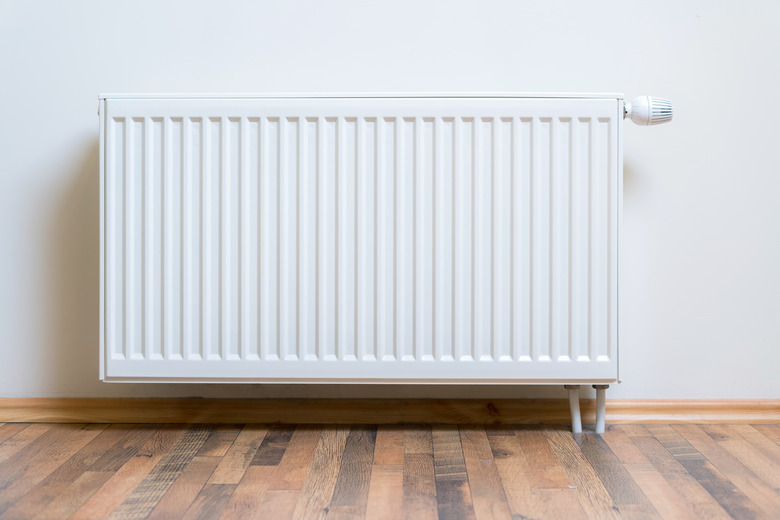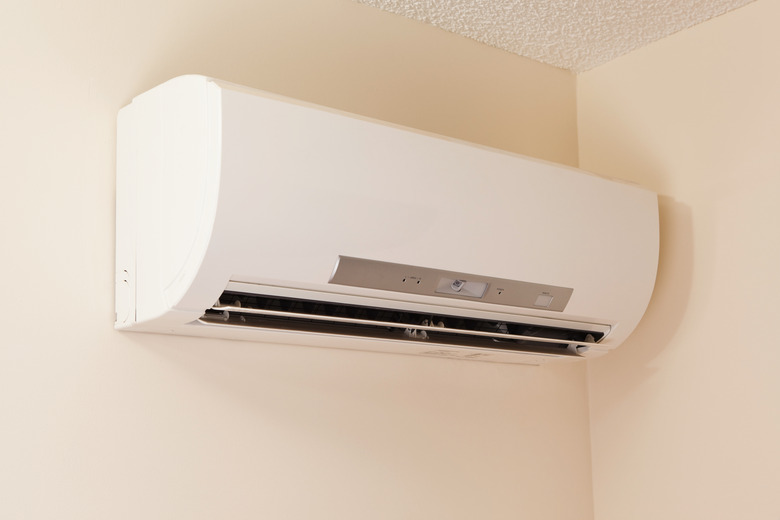The Most — And Least — Efficient Home Heating Systems
Ready for a new heating system? Look for an energy-efficient model to lower your utility bills and reduce your environmental impact. But which systems are the best — or the worst — for energy efficiency?
Overall, a heat pump is the most energy-efficient and cost-effective heating system for mild to moderate climates, but if you live in an area that experiences more extreme winter weather conditions, the best option is a high-efficiency gas furnace or boiler. Depending on fuel prices where you live, propane- or oil-fueled furnaces or boilers may be suitable as well. On the other hand, heating systems with the poorest efficiency are typically electric furnaces and baseboard heating as well as wood stoves and pellet stoves. Although these may be cheaper to install initially, they either cost a lot to operate or provide unsatisfactory results.
If you're shopping for a new heating system, there are a few things you should keep in mind before you sign the installer's invoice.
What Does Efficiency Mean?
Efficient home heating systems generate the most heat with the least amount of fuel waste. It's important to consider not only the waste produced by the heating system itself but also the waste produced by the energy-harvesting process as a whole. For example, electric furnaces do not waste any incoming "fuel" (electricity), but they are highly inefficient if the electricity is generated by burning fossil fuels, like coal. An electric furnace powered by renewable energy is more efficient than the same furnace model powered by nonrenewable energy.
Heating system efficiency can also be evaluated in terms of operating costs. The most efficient use of your money depends on fuel prices in your area. Typically, natural gas is less expensive than electricity, for example. Set a budget for upfront costs (including system installation) and operating costs and then find the most fuel-efficient system within those parameters.
Electric Heat Pumps: A Highly Efficient Heating System
Depending on where you live, an electric heat pump can offer a suitable compromise in terms of fuel efficiency and cost effectiveness. Heat pumps work by extracting heat from the air, and they function as both a furnace and an air conditioner. In the summer, heat is removed from inside your home and is deposited outside. In the winter, heat is removed from outdoor air and distributed throughout the home. Heat pumps are also a space-efficient solution because they can work with or without ducts.
In moderate climates, heat pumps can extract plenty of heat in a short amount of time. Because they don't need to run for a long time in these situations, they don't use a lot of electricity or cost a lot to operate. According to Energy.gov, heat pumps may reduce heating bills by up to 50 percent compared to electric furnaces. However, in extreme winter temperatures, heat pumps may run for an excessive amount of time and may therefore be more expensive to operate. In these situations, they're often supplemented with gas furnaces.
The Most Efficient Electric Heat Pumps
The efficiency of heat pumps is evaluated with a heating season performance factor (HSPF) rating, which measures a heat pump's average ability to extract heat from outdoor air. A higher number is better. The U.S. Department of Energy requires all new heat pumps to have a minimum HSPF of 8.2. The most efficient heat pump models available include:
- Fujitsu RLS3 Series with IntesisHome® App (14.2 HSPF)
- Fujitsu LZAH1 Series with FGLair® App (14 HSPF)
- Carrier 25VNA4 Infinity Series with Greenspeed Intelligence (13 HSPF)
- Daikin AURORA Single-Zone Systems (12.5 HSPF)
- Bryant 280A Evolution Series with Evolution Connex Control (12 HSPF)
Heat pumps also feature a second rating known as SEER, or seasonal energy efficiency ratio. This measures the heat pump's efficiency when in cooling mode. New heat pumps are required to have a SEER rating of at least 14, but many available models have SEER ratings above 20. A Lennox heat pump currently boats the highest SEER rating at 23.5.
Geothermal Heat Pumps: Expensive Upfront Costs, but Efficient
In addition to electric heat pumps, there are geothermal heat pumps, which work by extracting heat from the ground (or groundwater) instead of from the air. These are some of the most expensive heating systems to install, with upfront costs topping $10,000 in many areas of the country. However, they cost very little to operate because a significant amount of heat can be moved with a relatively small amount of electricity.
Geothermal heat pumps (unlike electric heat pumps) are not given HSPF ratings. The following units can deliver exceptional cost savings compared to standard geothermal heat pumps:
- ClimateMaster Trilogy 45 Q-Mode Series (up to 69 percent savings)
- GeoStar Sycamore Series with Aurora Control (up to 63 percent savings)
- Trane TVG Series with Aurora Control (up to 63 percent savings)
- WaterFurnace 7 Series 700A11 with Aurora Control (up to 63 percent savings)
Furnace Efficiency Ratings Explained
Instead of the HSPF for heat pumps, you can compare the energy efficiency of natural gas, propane and oil furnaces with the help of the annual fuel utilization efficiency (AFUE) rating. The AFUE indicates the percentage of fuel that is converted to useable heat. It is calculated by dividing the output energy by the input energy and then multiplying the result by 100 to get a percentage.
Fortunately, you don't have to do this calculation yourself. Furnaces and other appliances have AFUE ratings displayed on bright yellow EnergyGuide stickers to make it easy to compare the efficiency of different models. The higher the AFUE, the better. In the United States, all new furnaces must have an AFUE of at least 80. Furnaces are now available with AFUE ratings up to 99, but an AFUE of just 90 is all that's necessary for a furnace to be considered a high-efficiency furnace.
AFUE ratings, however, can't be applied to electric heating systems. Electricity generates no exhaust inside the furnace and therefore loses no heat, which means all electric furnaces have an AFUE rating of 100. However, this is misleading because the power plants that generate electricity often do waste a significant amount of fuel. Therefore, electricity isn't an efficient source of energy unless it comes from a renewable source, like solar or wind.
Instead of fuel efficiency, electric furnaces are evaluated in terms of operating costs. A furnace draws an exceptional amount of electricity to generate heat. Depending on fuel costs where you live, switching to an electric furnace could make your utility bill increase significantly.
High-Efficiency Gas Furnaces
ENERGY STAR has compiled a list of 25 gas furnaces with AFUE ratings at or above 97. Each promises at least 20 percent savings compared to standard furnaces. Three furnaces stand out thanks to their exceptionally high AFUE ratings:
- Lennox SLP99V Variable-Capacity Gas Furnace Series (99 AFUE)
- Rheem Prestige R98V Series with EcoNet Control Center (98.7 AFUE)
- Ruud Ultra U98V Series with EcoNet Control Center (98.7 AFUE)
Modern gas furnaces are able to achieve such high efficiency ratings thanks to design features like sealed combustion chambers, secondary heat exchangers, variable speed blowers and heat output, direct spark ignition systems and improved filtration systems.
High-Efficiency Boilers: Using Hot Water Instead of Warm Air
A boiler is another gas-, propane- or oil-powered heating system. Instead of delivering warm air through ductwork like a furnace, a boiler sends hot water (known as hydronic heating) through pipes or tubing under the floor or through convection or radiator units. Heat transfers from the water to the pipes and finally to the air, but first, the fuel is burned to heat the water. Only one boiler model exists with an AFUE of 97: Energy Kinetics – Accel CS EK1C 90. Nearly 600 boilers have AFUE ratings of 95 or greater, so there are plenty of other options from which to choose.
Electric Heating Systems: Significant Upfront Costs
Electric furnaces are some of the least cost-effective options on the market, and yet 34 percent of U.S. homes are heated with electricity, according to Energy.gov. Electric heating systems include central forced-air furnaces, baseboard heaters and radiant cable heating. The operating costs of electric heating systems may be improved if the electricity is generated from solar panels mounted on the home, but there are significant upfront cost barriers to overcome in this scenario.
Wood and Pellet Stoves: Old Fashioned and Inefficient
Wood-burning units are rarely used as whole-home heaters. However, they may prove to be suitable in smaller homes with open floor plans. Pellet stoves are more efficient than wood stoves. Note that fireplaces tend to exhaust a lot of heat through the chimney and are not considered effective or efficient at heating an entire home.
Wood and pellet stoves are given an efficiency rating known as HHV, or higher heating value. The most efficient pellet stoves include:
- Enerco Group, Inc. Model PS20W (87 HHV)
- Extraflame S. P. A. Model V5.2 (87 HHV)
- Paromax International LLC Models Rafael 55a, Europa 75a (85 HHV)
The most efficient wood stoves include:
- FPI/Regency Fireplace Products Model F3500 (81 HHV)
- Blaze King Industries, Inc. Model King KE40 (81 HHV)
- Hearthstone Quality Home Heating Products Inc. Model Green Mountain 80 8680 (81 HHV)
- Kuma Stove and Iron Works Model Tamarack LE and others (81 HHV)
You can also improve the fuel efficiency of a wood or pellet stove by burning wood that's properly cured and from tree species known to be particularly dense, such as ironwood, rock elm, hickory, oak and sugar maple.
Other Factors Affecting Heating Efficiency
High-efficiency heating systems are just one piece of the puzzle. For example, AFUE ratings tell you how much fuel turns into useable heat, but this figure still doesn't necessarily translate into the amount of heat that reaches every room in your home. You could still lose 20 percent of a furnace's heat through leaky ductwork. Heat will also be lost through ducts that are poorly insulated. To prevent the system from kicking on too often and using more fuel, seal and insulate ducts and, if applicable, insulate the attic, basement or crawl space where the furnace resides.
Consider investing in supplemental heating, like a space heater, for specific rooms that seem difficult to keep warm. Duct dampers, zoning systems and smart thermostats can also help you exert greater control over which parts of the house get heated and when. Practice keeping the thermostat set to around 68 degrees Fahrenheit or lower so the heating system isn't forced to work overtime to make up for an extreme temperature difference. Don't forget the heating power of the sun. Open curtains on sunny days to help your home heat up passively.
Finally, take care of your heating system no matter which kind you choose. Dirt, dust and debris that drifts onto any mechanical parts will cause wear and tear over time, even to the point of causing motors to fail. Change filters regularly to keep this dirt at bay and to improve airflow through the system. You'll enjoy a warmer home, lower energy bills, better indoor air quality and a well-functioning heating system as a result.
References
- Service Champions: What Is AFUE? Understanding Annual Fuel Utilization Efficiency
- Learn Metrics: AFUE Rating For Furnaces: How To Calculate AFUE Savings?
- ENERGY STAR: ENERGY STAR Most Efficient 2021 — Furnaces
- ENERGY STAR: ENERGY STAR Certified Boilers
- Energy.gov: Heat Pump Systems
- Lennox: What Is a Heat Pump?
- Pick HVAC: Most Efficient Heat Pumps Reviews and Buying Guide 2021
- Goodman: What HSPF Means for You?
- ENERGY STAR: ENERGY STAR Most Efficient 2021— Central Air Conditioners and Air Source Heat Pumps
- United States Environmental Protection Agency: Energy Efficiency and Your Wood-Burning Appliance


